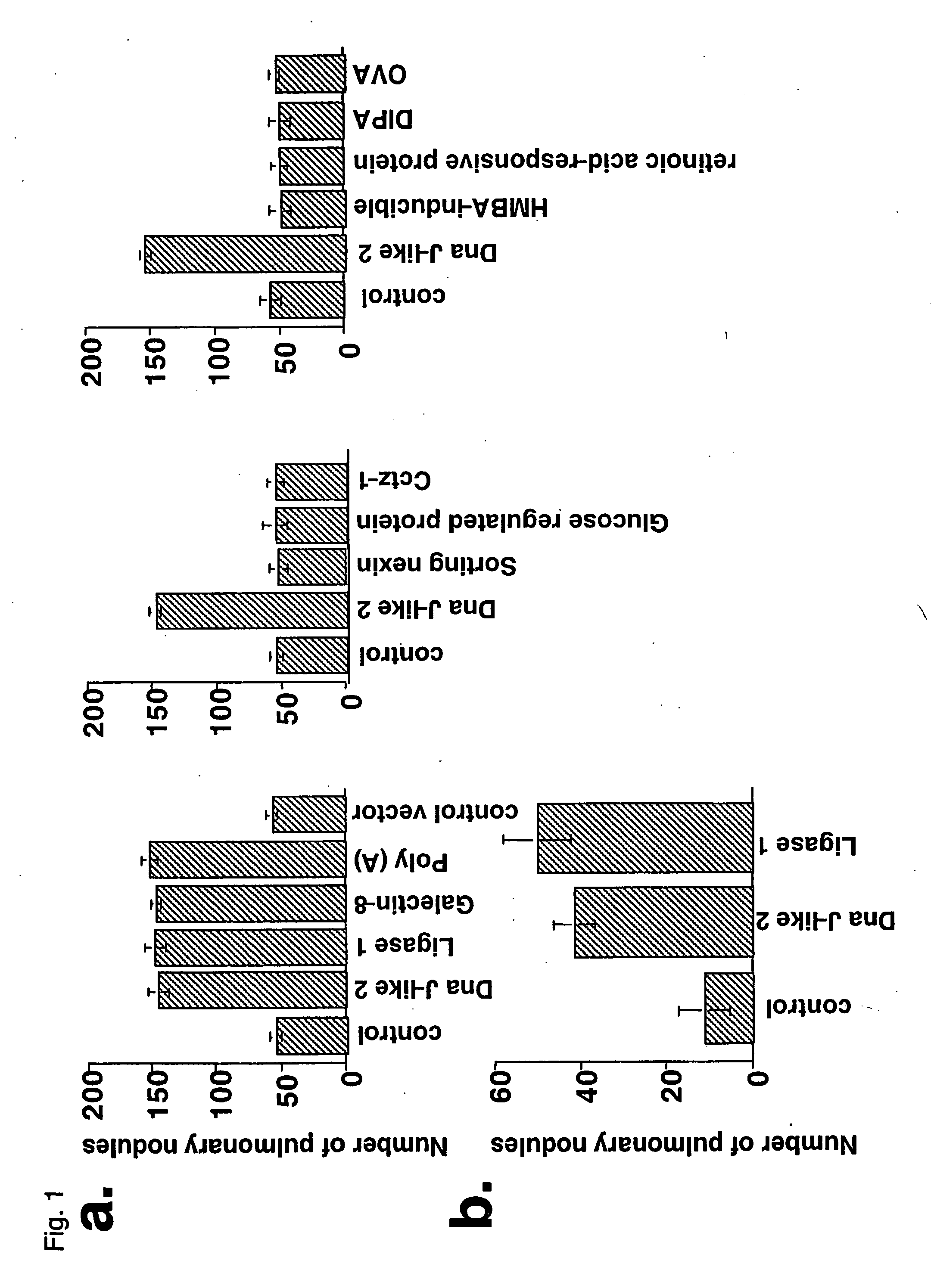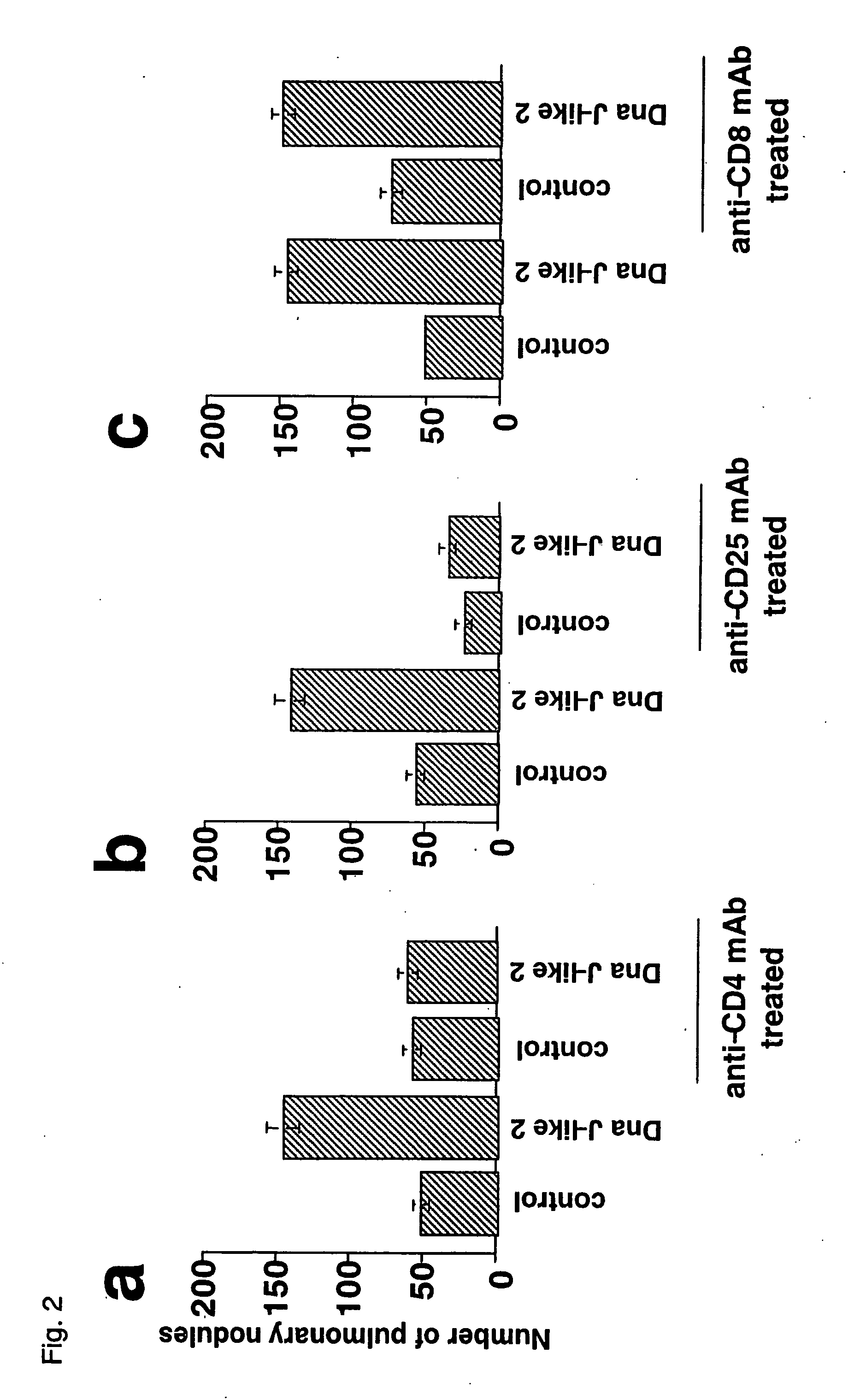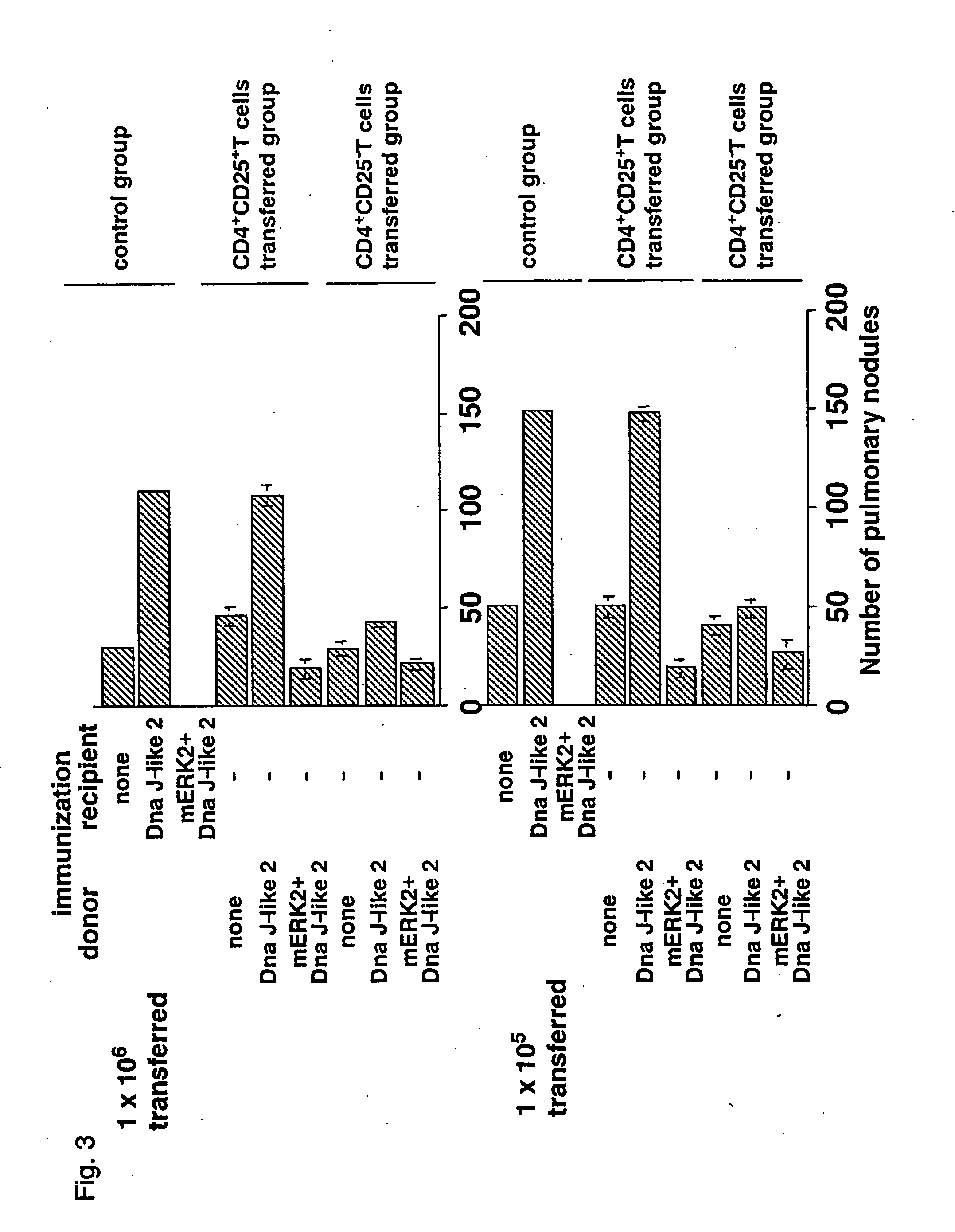Method and composition for regulating the activity of regulatory t cells
a technology compositions, applied in the direction of antibody medical ingredients, peptide/protein ingredients, immunological disorders, etc., can solve problems such as making transplantation difficult, and achieve the effects of suppressing rejection and graft-versus-host reactions, and enhancing the activity of regulatory t cells
- Summary
- Abstract
- Description
- Claims
- Application Information
AI Technical Summary
Benefits of technology
Problems solved by technology
Method used
Image
Examples
example 1
Promotion of Metastases to Lung by Sensitization with SEREX Antigen Alone
[0037] In the same model of metastases to lung as that of Reference Example, mice immunized by the plasmids encoding SEREX antigen or the control vectors after 5 days from the tumor administration were sacrificed after 28 days from the tumor administration, respectively. Then, the number of pulmonary nodules was counted for each animal. When the animals were immunized by the respective plasmids of four different antigens (each of them was a mouse's protein), i.e., a heat shock protein DnaJ-like2, DNA ligase 1, Galectin-8, and poly (A)-binding protein cytoplasmic, as the SEREX antigen, the number of the nodules was 130 to 170. In the case of no immunization like that, the number of the nodules was 30 to 50. On the other hand, when the animals were respectively immunized by plasmids encoding three mouse's molecules which could not be detected even after repeated SEREX analysis, i.e., glucose regulated protein, s...
example 2
CD4+CD25+ T cells Sensitized by SEREX Antigen Promote Metastases to Lung
[0039] For directly validating the results obtained in Example 1, CD4+CD25+ T cells sensitized by SEREX antigen was transplanted in a tumor-inoculated mouse and the presence or absence of metastatic promotion were observed. That is, when CD4+CD25+ T cells were transplanted from a mouse immunized by DnaJ-like2 antigen into a tumor mouse, metastases to lung was considerably promoted. In contrast, when CD4+CD25− T cells were transplanted, nearly no promotion of metastases to lung was observed. In addition, significant metastatic promotion was observed when unsensitized CD4+CD25+ T cells were transplanted, compared with no transplantation. In this case, however, the degree of metastatic promotion was extremely small, compared with the case in which sensitized CD4+CD25+ T cells were transplanted (FIG. 3).
example 3
Pre-Treatment with SEREX Antigen Suppresses the Activity of CD4+ T cells but not CD8+ T Cells
[0040] The inventor et al. of the present invention have previously reported that the administration of each of plasmids encoding tumor antigen and SEREX antigen to the tumor-inoculated mouse could induce a strong antitumor immune response, while considerably enhancing the helper function of CD4+ T cells, and besides the amplification of CD8+ T cell response was depended on CD4+ T cells (H. Nishikawa et al., Proc. Natl. Acad. Sci. USA 98: 14571-14576 (2001); WO 03 / 000894 A1).
[0041] In view of the above, it was studied whether or not the immune responses of CD8+ T cells and CD4+ T cells changed with respect to the suppression on an antitumor immune response confirmed in Example 2. A 9-mer of mutated kinase (i.e., a peptide mERK2 9m) was used as a tumor, antigen. A mouse was pre-immunized with DnaJ-like2 and then immunized with a plasmid encoding mERK2 9m alone or together with a plasmid enc...
PUM
| Property | Measurement | Unit |
|---|---|---|
| body weight | aaaaa | aaaaa |
| body weight | aaaaa | aaaaa |
| hydrophobic/hydrophilic | aaaaa | aaaaa |
Abstract
Description
Claims
Application Information
 Login to View More
Login to View More - R&D
- Intellectual Property
- Life Sciences
- Materials
- Tech Scout
- Unparalleled Data Quality
- Higher Quality Content
- 60% Fewer Hallucinations
Browse by: Latest US Patents, China's latest patents, Technical Efficacy Thesaurus, Application Domain, Technology Topic, Popular Technical Reports.
© 2025 PatSnap. All rights reserved.Legal|Privacy policy|Modern Slavery Act Transparency Statement|Sitemap|About US| Contact US: help@patsnap.com



